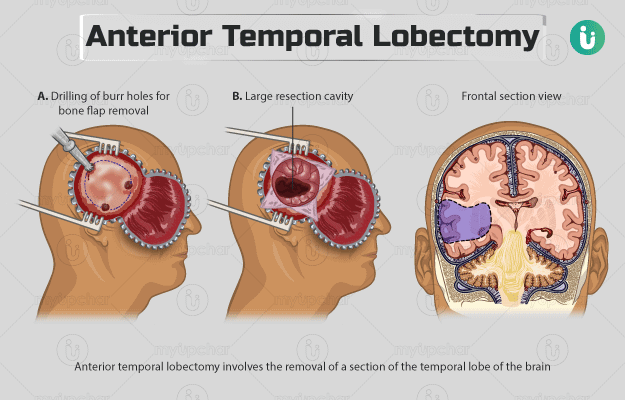Summary
Anterior temporal lobectomy involves the removal of a section of the temporal lobe of the brain to treat temporal lobe epilepsy. Temporal lobe (present on the sides of the head) is associated with various functions in the human body, including vision interpretation and speech production. Epilepsy that originates in the temporal lobe of the brain is called temporal lobe epilepsy.
Anterior temporal lobectomy is recommended when temporal lobe epilepsy does not improve after taking two or more medications. The surgeon will conduct various investigations for several months to locate the source of epilepsy in your brain and to decide whether surgery is the correct option for treatment. The operation requires three to six hours for completion. You will be allowed to go home in two to three days. After the procedure, the surgeon will advise you to rest at home for at least three months before resuming work. The surgery will improve your quality of life and reduce your dependency on seizure control medications.






































